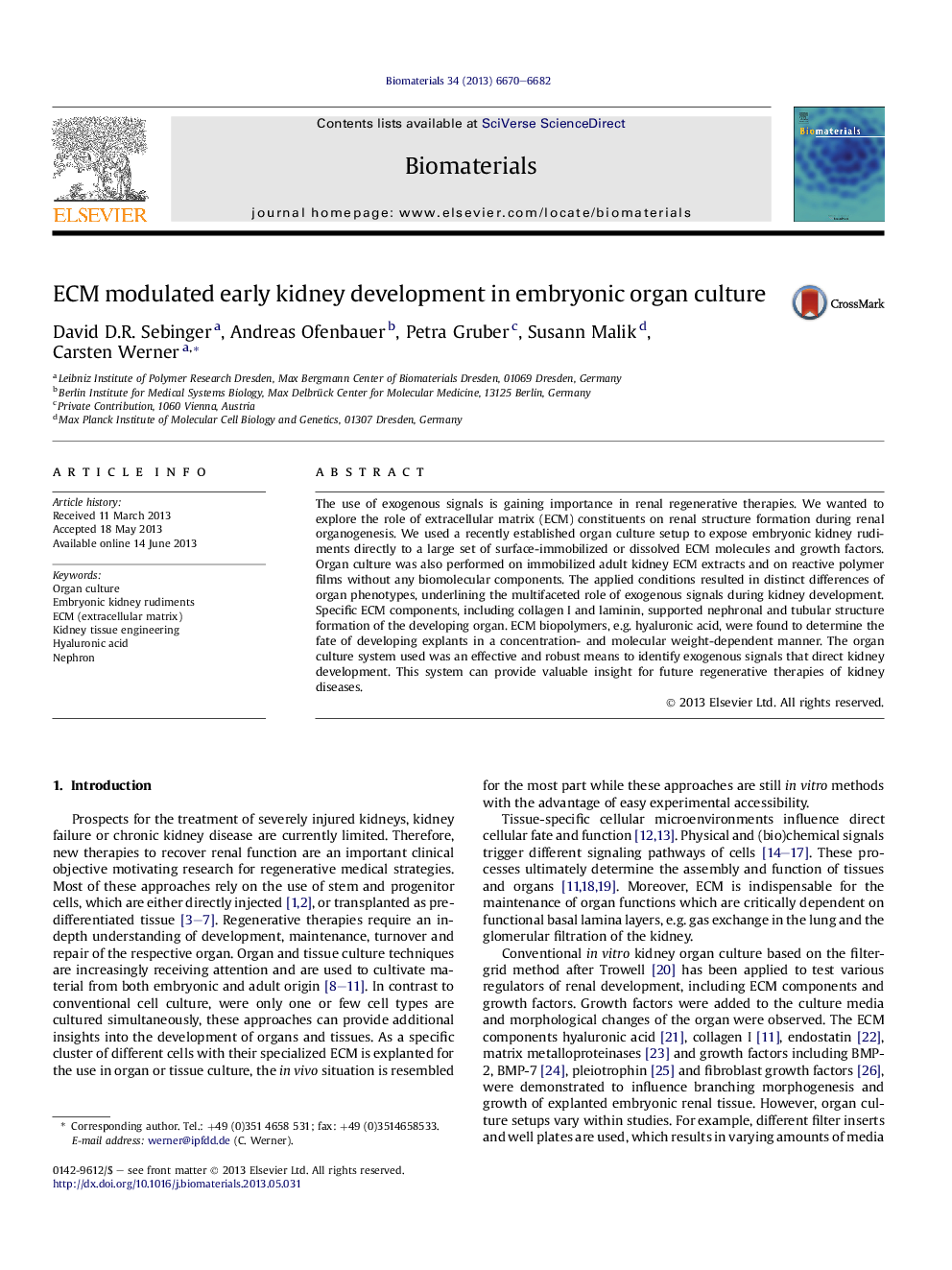| Article ID | Journal | Published Year | Pages | File Type |
|---|---|---|---|---|
| 10228902 | Biomaterials | 2013 | 13 Pages |
Abstract
The use of exogenous signals is gaining importance in renal regenerative therapies. We wanted to explore the role of extracellular matrix (ECM) constituents on renal structure formation during renal organogenesis. We used a recently established organ culture setup to expose embryonic kidney rudiments directly to a large set of surface-immobilized or dissolved ECM molecules and growth factors. Organ culture was also performed on immobilized adult kidney ECM extracts and on reactive polymer films without any biomolecular components. The applied conditions resulted in distinct differences of organ phenotypes, underlining the multifaceted role of exogenous signals during kidney development. Specific ECM components, including collagen I and laminin, supported nephronal and tubular structure formation of the developing organ. ECM biopolymers, e.g. hyaluronic acid, were found to determine the fate of developing explants in a concentration- and molecular weight-dependent manner. The organ culture system used was an effective and robust means to identify exogenous signals that direct kidney development. This system can provide valuable insight for future regenerative therapies of kidney diseases.
Related Topics
Physical Sciences and Engineering
Chemical Engineering
Bioengineering
Authors
David D.R. Sebinger, Andreas Ofenbauer, Petra Gruber, Susann Malik, Carsten Werner,
